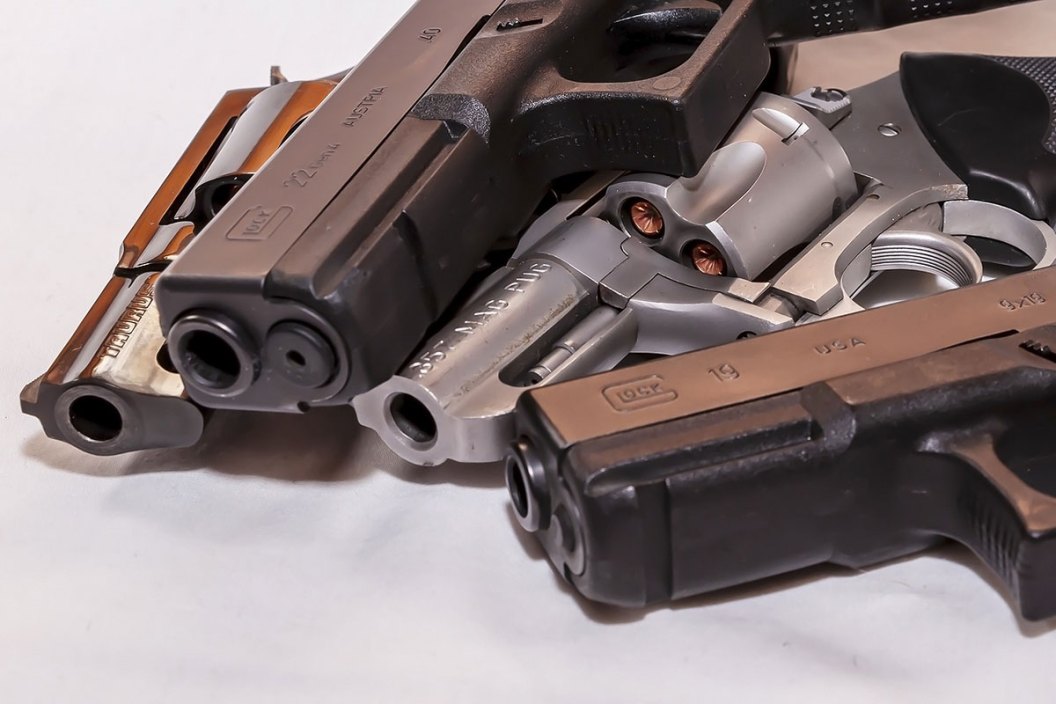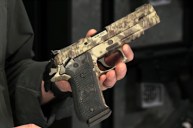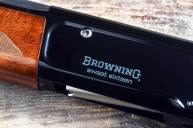The influence of these gunmakers has been literally felt around the world—this is how they got started and developed.
While there are still plenty of gun makers headquartered in the United States, some of the most popular gun companies are international conglomerates with multiple HQs, often including at least one in the U.S.
Here's a brief rundown of some of the most famous arms companies and arms manufacturers in the international firearms industry. Their products are used by law enforcement, shooting sports competitors, hunters, and recreational shooters.
Beretta
Italy has a storied history of gun making, and Beretta is a big part of it.
Officially known as Fabbrica d'Armi Pietro Beretta, the privately held gun manufacturer operates in several countries and the guns it makes are used all over the world for civilian, law enforcement, and military applications, with three quarters of Beretta's sales taken up by sporting arms.
It is also one of the oldest gun companies in the world. It was founded in the 16th century, long before the United States of America was even an idea. The first product the company made were arquebus barrels in 1526, which equipped the Venetian fleet at the Battle of Lepanto in 1571. Beretta has supplied firearms and gun components for every major war in Europe since 1650.
Remarkably, the company has almost entirely been run by a family dynasty. In the U.S., Beretta's 92FS pistol served as the M9, the military's standard sidearm from 1986 until 2019.
Currently, Beretta is run by Franco Gussalli Beretta, President and CEO. The father-to-son dynasty was only interrupted when Ugo Gussalli Beretta, who married into the family and adopted the last name, took control.
Today, the company produces a wide range of long guns and handguns, including double barrel shotguns, semi-auto shotguns, rifles, submachine guns, lever- and bolt-action rifles, revolvers, and semi-automatic pistols. Its parent company, Beretta Holding, also owns Beretta USA, Benelli, Franchi, SAKO, Stoeger, Tikka, Uberti, and Burris Optics.
Glock
This gunmaker is quite a bit younger than Beretta, but no less famous. Glock is headquartered in Deutsch-Wagram, Austria and is named after its founder, Gaston Glock. Since it's founding in 1963, the company has exclusively produced polymer framed-handguns. Today, it also makes knives, entrenching tools, and apparel.
Introduced in 1982 with the Glock 17, the company's series of polymer-framed, short recoil operated, striker fired, semi-automatic pistols created a slowly developing revolution in the handgun world. Initially, many were reticent to accept a gun made of "plastic," but as people realized modern polymers can be extraordinarily tough, they changed their minds.
In the 21st century, polymer framed striker guns continue to dominate the handgun market, especially for concealed carry and law enforcement use.
Glock supplies national armed forces, security agencies, and police forces in at least 48 countries with handguns, not to mention robust civilian sales for recreational shooting, competition, and home and self defense all over the world. The majority of law enforcement agencies in the United States use Glock pistols.
Today, the company produces over 25 handgun models in various sizes, in eight different chamberings, including .22LR, 9mm, .40 S&W, .380 Auto, 10mm Auto, .45 ACP, .357 SIG, and .45 G.A.P.
SIG SAUER
SIG SAUER is one of the most famous gunmakers whose newer handgun and rifles models garnered extreme popularity in recent years.
SIG SAUER is actually the brand name used by two sister companies that design and manufacture firearms. The original SIG SAUER was formed as a German company in 1976 that partnered Schweizerische Industrie Gesellschaft (SIG) of Switzerland with J.P. Sauer & Sohn of Germany in the 1970s. Today, that company is officially known as SIG Combibloc Group and is no longer in the gun business. In 2018, the company's firearms subsidiary, SIG Arms AG, was sold to L&O Holding in western Germany and was initially renamed SAN Swiss Arms AG. It was later renamed SIG SAUER AG.
Now this is where things get really confusing. In 1985, a separate company was founded in the United States, Virginia to be specific, called SIGARMS, which imported and distributed SIG SAUER firearms to American buyers. In 1990, it moved to New Hampshire and in 2007, it was renamed SIG SAUER, Inc. It is also owned by L&O Holding.
Back in 1853, Friedrich Peyer im Hof, Heinrich Moser, and Johann Conrad Neher formed the Swiss Wagon Factory (Schweizerische Waggon Fabrik). Seven years later, they created a state-of-the-art rifle designed by Jean-Louis Joseph Prélaz, that won a Swiss military competition resulting in a contract for 30,000 Prelaz-Burnand rifles, which was designated as the M1863 rifle. So, SWF became the Swiss Industrial Company (SIG). Ultimately, SIG made 15,566 of the rifles.
The company's next big success was the SIG P210 pistol that was developed in 1947. The single-action semi-automatic handgun was adopted by the Swiss military in 1949 as the Pistole 49.
In the 1970s, SIG bought J.P. Sauer and Sohn, resulting in the formation of SIG SAUER. Before World War II, SIG mostly made shotguns and hunting rifles. During the war, they made the SAUER 38H handgun, but ceased production when the war ended.
SIG SAUER's handgun line began in 1975 with the P220, a pistol that is still in production today. The company's 9mm P226 has become a favorite of law enforcement agencies in the United States and abroad, and its P365 line of ultra compact concealed carry handguns has been wildly popular over the past five years.
In 2018, in a huge arms sales deal, SIG SAUER's modular P320 handgun platform beat out a number of competitors, including Beretta, to win a U.S. military handgun trial. It would go on to replace the Beretta 92FS/M9 as the U.S. military's standard sidearm, designated as the M17/M18 pistol.
Today, SIG makes a wide range of small arms including semi-auto handguns, machine guns, carbines, submachine guns, rifles, suppressors, optics, and ammo, as well as shooting gear and accessories. They also have a line of air guns and airsoft guns.
Taurus International
Taurus Armas is a Brazilian based gun company that is a division of Forjas Taurus, a manufacturing conglomerate that also focuses on metals manufacturing, plastics, body armor, helmets, and civil construction.
Taurus produced its first firearm, the Model 38101SO revolver, in 1941. It began exporting revolvers from Brazil to the United States market through a series of importers beginning in 1968.
Later, in 1971, Bangor Punta Corporation, which was the parent company of American gun manufacturer Smith & Wesson at the time, purchased 54 percent of Forjas Taurus. This allowed the two gun companies to share design and manufacturing information. In 1977, Taurus was bought by its current owners, severing all ties with S&W.
However, Taurus made its reputation making revolvers similar to those made by S&W, the legacy of which can be seen in the company's Raging Bull, Raging Hornet, and Judge wheelguns today.
In the 1970s, Beretta was contracted to produce firearms for Brazil's military. Once the contract was up in 1980, Taurus bought Beretta's São Paulo manufacturing plant, along with the tooling, technical drawings, and existing work force necessary to produce a number of handgun designs.
To better serve the U.S. market, Taurus International Manufacturing Incorporated, also known as Taurus USA, was created in 1984. The company's version of the Beretta 92FS, sold as the Taurus PT92, became a big success, as it was nearly identical to the Italian-made gun and was much more affordable. Plus, many U.S. customers preferred the slide-mounted safety on the Taurus compared to the slide-mounted safety on the Beretta.
In 1997, Forjas Taurus bought the rights and equipment to manufacture Rossi brand revolvers, which are made under the Rossi name in Brazil. In 2012, Taurus bought Heritage Manufacturing and its production was soon moved to Taurus's plant in Miami, Florida.
Heckler & Koch
Heckler & Koch (HK) is a German defense company that makes handguns, rifles, submachine guns, and grenade launchers for various militaries around the world. It's headquartered in Oberndorf am Neckar in the German state of Baden-Wüttemberg with subsidiaries in the United Kingdom and the United States.
The larger Heckler & Koch Group includes Heckler & Koch GmbH, Heckler & Koch Defense, NSAF Ltd., and Heckler & Koch France SAS. HK is famous for providing firearms for high speed military and paramilitary units, including the British SAS; KMar in the Netherlands; the United States Navy SEALs, Delta Force, and HRT; Canada's Joint Task Force 2, Germany's KSK and GSG 9, and other counter-terrorist and hostage rescue teams.
HK's origins go back to the end of World War II and the fall of Nazi Germany. The French dismantled the entire Waffenfabrik Mauser AG factory and all factory records were destroyed. In 1948, three former Mauser engineers, Edmund Heckler, Theordor Koch, and Alex Seidel saved some records and materials from the factory and started a machine tool plant in the vacant space that became Engineering Office Heckler & Co.
In 1949, the company changed it's name to Heckler & Koch GbbH and began making machine tools, bicycles, sewing machine parts, gauges, and other precision components.
In 1956, the West German government wanted a new infantry rifle for the German Federal Army and HK answered the call with the G3 battle rifle in 7.62 NATO. The government approved and awarded HK the contract. In 1959, the rifle was officially declared the standard rifle of the Bundeswehr.
Later, HK developed the HK21 machine gun, which was based on the G3 design. One of the company's most famous gun designs came in 1966 when the HK54 machine pistol was introduced. By 1969, the design became the MP5 machine pistol, which has gone on to be used by numerous militaries and law enforcement agencies across the world.
In 1974, HK officially diversified its production with the creation of HK Defense and Law Enforcement Technology and HK Hunting and Sports Firearms. In 1991, HK was bought by British Aeropspace's Royal Ordnance division.
But HK would be back. In 1994 and 1995, the German government awarded HK contracts for producing an up-to-date assault rifle and handgun for the Bundeswehr. HK's answer was the Project HK50 rifle, which was a lightweight carbon fiber assault rifle that became known as the HK G36. The handgun it delivered was a version of the now-famous USP, which had been in production since 1989.
In 1999, British Aerospace merged with Marconi Electronic Systems, making HK's new owner the resulting BAE Systems. In 2002, the company restructured and sold HK to a group of private investors, who created the German group holding company HK Beteiligungs GmbH.
In 2003, it was restructured again as Heckler & Koch Jagd und Sportwaffen GmbH and its business was separated into Defense and Law Enforcement and Sporting Firearms, similar to the 1970s diversification.
Today, HK sells its handguns and rifles to law enforcement and civilians in the U.S. and has locations in Virginia, New Hampshire, and Georgia.
NEXT: PROFILING THE GUNS OF THE VIETNAM WAR
WATCH





